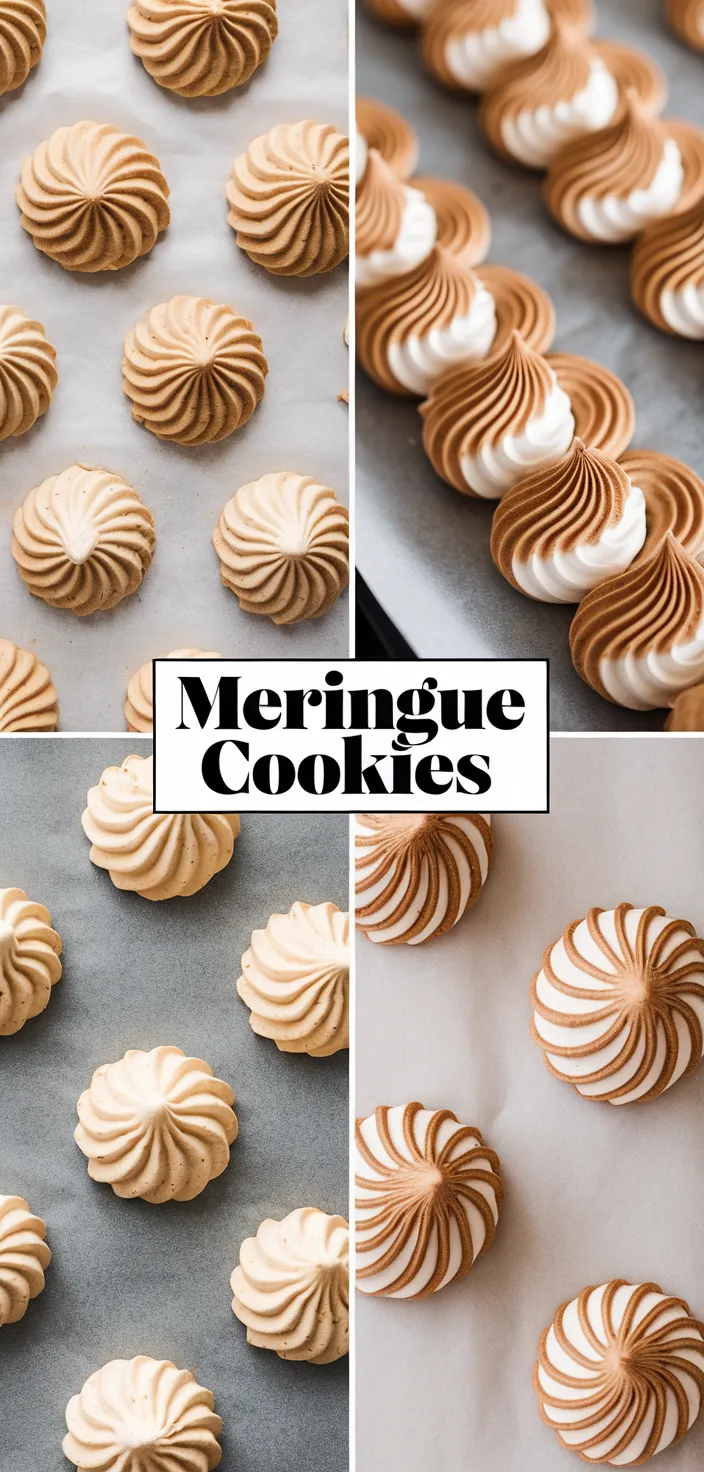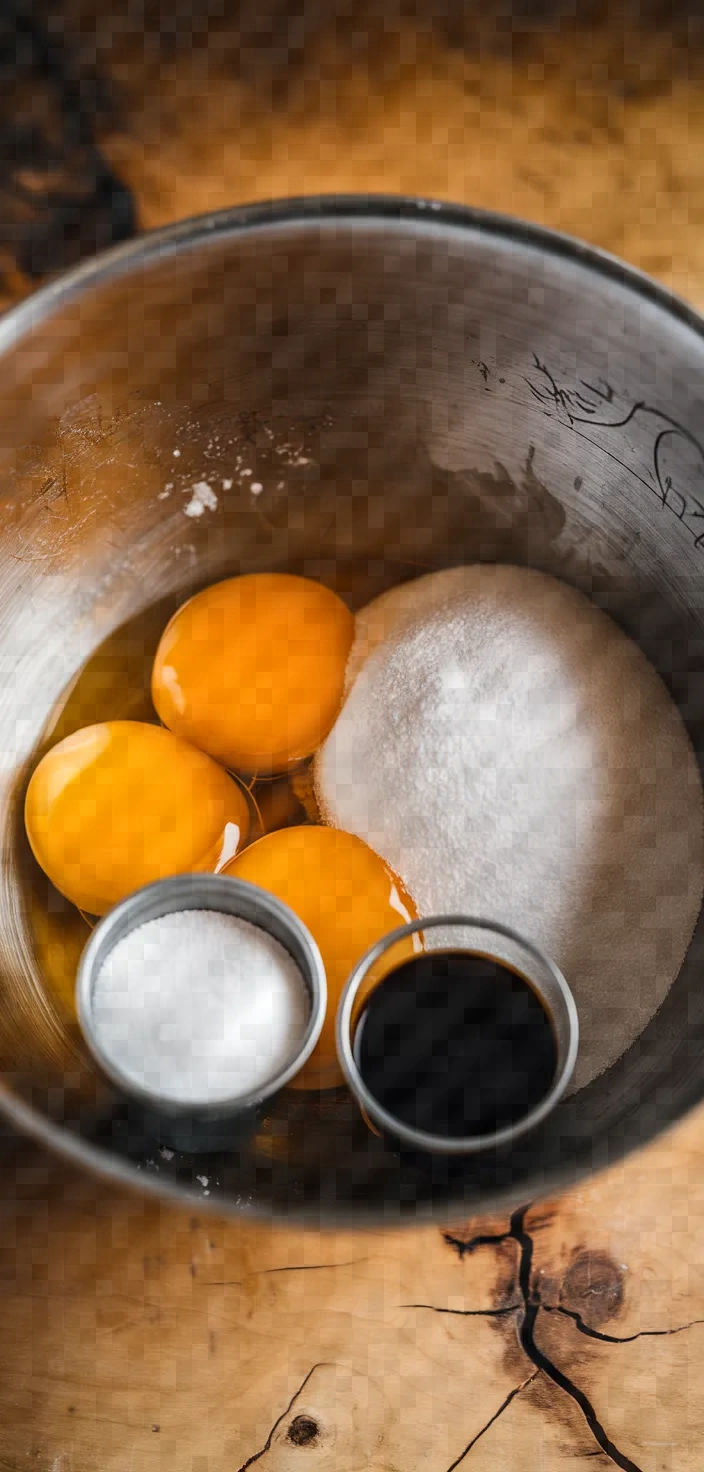Meringue cookies are such a treat! They are an airy, light, and crispy dessert.
To make them, simple ingredients come together: 3 large egg whites, 1 cup of granulated sugar, a pinch of salt, 1/4 teaspoon of cream of tartar, and a hint of vanilla extract. Low in fat, they are the kind of sweet that can be enjoyed without too much guilt.
For my money, the real bonus of making these cookies is the opportunity to whip egg whites into stiff peaks—a mesmerizing, rewarding process.

Ingredients

Egg Whites: Provide structure to meringue; are high in protein; and are low in calories.
Sugar in Granulated Form: Imparts sweetness, helps achieve a crispy texture.
Tartar cream: Maintains the stability of egg whites, assists meringues in maintaining their form.
Extract of vanilla: Imparts aromatic flavor, boosts sweetness without adding calories.
Sodium chloride: Helps make things sweet balance; makes everything taste like everything.
Ingredient Quantities
- 3 large egg whites
- 1 cup granulated sugar
- 1/4 teaspoon cream of tartar
- 1 teaspoon vanilla extract
- Pinch of salt
Instructions
1. Line two baking sheets with parchment paper and set your oven to a temperature of 225°F (110°C).
2. In a pristine, parched mixing basin, unite the ovum albescent and the tartar cremoris.
3. Use an electric mixer to beat the egg whites at medium speed until they are foamy.
4. Slowly add in the granulated sugar, one tablespoon at a time, and keep beating the mixture.
5. When all the sugar has been added, raise the mixer to high and beat until stiff, glossy peaks form and the sugar is fully dissolved.
6. Fold in the vanilla extract and a pinch of salt with love.
7. Place the meringue mixture into a piping bag and fit it with a large star tip.
8. On the prepared baking sheets, pipe small mounds or shapes of meringue, maintaining space between each.
9. Meringues should be baked in a preheated oven for approximately
1.5 to 2 hours, or until they reach a state of dryness that allows them to be lifted off the parchment with ease.
10. Shut off the oven, keep the oven door slightly open, and allow the meringues to cool completely in the oven before taking them out.
Equipment Needed
1. Oven
2. Two baking sheets
3. Parchment paper
4. Mixing bowl
5. Electric mixer
6. Tablespoon
7. Piping bag
8. Large star piping tip
FAQ
-
What is the purpose of cream of tartar in meringue cookies?
Cream of tartar acts as a stabilizer for the egg whites, helping them maintain their structure after being whipped. -
Can I use another type of sugar instead of granulated sugar?
It’s best to stick with granulated sugar as it dissolves well and achieves the desired texture, but superfine sugar can be used for a smoother finish. -
Why are my meringue cookies chewy?
Chewy meringues can result from underbaking or high humidity. Be sure to bake them long enough to dry out completely. -
How do I prevent my meringue from cracking?
Ensure your oven is not too hot and let the meringues cool slowly in the oven with the door ajar to prevent sudden changes in temperature. -
How do I know when the egg whites are whipped enough?
Egg whites should reach stiff peaks, meaning when you lift the beaters, the peaks will stand straight up without folding over. -
Can I add food coloring to the meringue mixture?
Yes, you can add a few drops of gel or liquid food coloring during the last stages of whipping the meringue. -
How should I store meringue cookies?
Store meringue cookies in an airtight container to keep them crisp. They can be kept at room temperature for up to a week.
Substitutions and Variations
Substitutes for granulated sugar: Use superfine sugar for a smoother texture, or substitute with the same amount of powdered sugar.
When you have no cream of tartar, substitute it with 1 teaspoon of lemon juice or white vinegar. Use this if you’re following one of the many recipes that call for cream of tartar.
Vanilla extract: Substitute the same amount of another flavoring extract, such as almond, peppermint, or lemon, for vanilla.
A pinch of salt: You can leave it out or use a pinches worth of sea salt, which will provide a flavor that is slightly different from that of using table salt.










